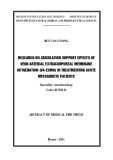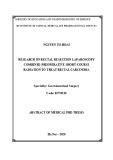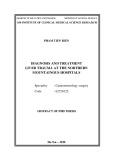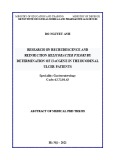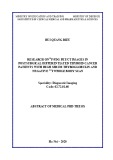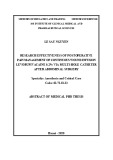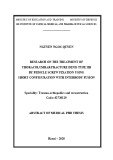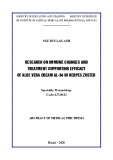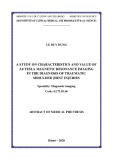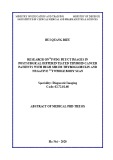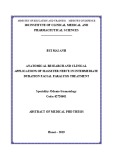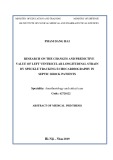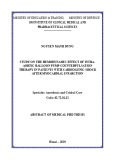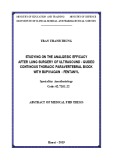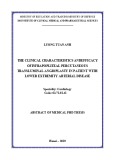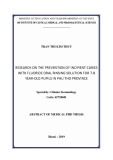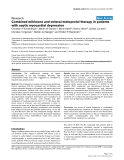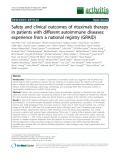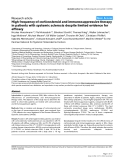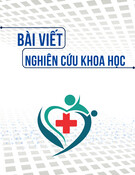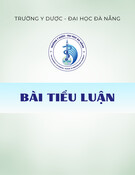
1
INTRODUCTION
Cardiogenic shock (CS) is a condition of reduced tissue perfusion,
due to impairment of the pumping function of ventricles under normal
circulation volume. In patients with myocardial infarction, cardiogenic
shock was the highest mortality rate, the previous mortality rate was 80%,
thanks to improvements in emergency and treatment, mortality rates were
reduced to 40-50%.
Active treatment to restore, maintain hemodynamic stability,
ensure optimal blood oxidation and coronary revascularization was the
main treatment for patients with cardiogenic shock after myocardial
infarction. The emergence of mechanical support facilities such as intra-
aortic balloon pump counterpulsation (IABP), left ventricular support,
ECMO... contribute to increasing the quality of cardiogenic shock
treatment.
IABP is a device that supports mechanical circulation, is placed
through the femoral artery by Seldinger technique, the balloon is inflated
in the diastole (increased coronary artery perfusion, cerebral vessels), is
rapidly flushed in the systole (reduced heart activity, reduced the need for
0
2
cardiac muscles and increased cardiac output). In 1968, IABP
technique was first used for patients with cardiogenic shock after
myocardial infarction, with 70,000 - 100,000 cases in the United States
every year.
In Vietnam, IABP has been used in some hospitals, such as: Ho Chi
Minh City Heart hospital (2005), 108 Military Central Hospital (2009), Hanoi
Heart hospital (2012)... has brought good effects on patients with severe heart
failure after open heart surgery, cardiogenic shock.
In order to assess the effectiveness and safety of intra-aortic
balloon pump counterpulsation (IABP) in hemodynamic support to
patients with cardiogenic shock due to myocardial infarction, we
conducted the study"Study on the hemodynamic effect of intra-aortic
balloon pump counterpulsation (IABP) therapy in patients with
cardiogenic shock after myocardial infarction”with two objectives:
1. Efficacy of intra-aortic balloon pump counterpulsation (IABP) in
hemodynamic support to patients with cardiogenic shock after
myocardial infarction
2. Remarks on the efficacy of treatment and complication of intra-aortic
balloon pump counterpulsation (IABP) in the treatment of cardiogenic
shock after myocardial infarction






